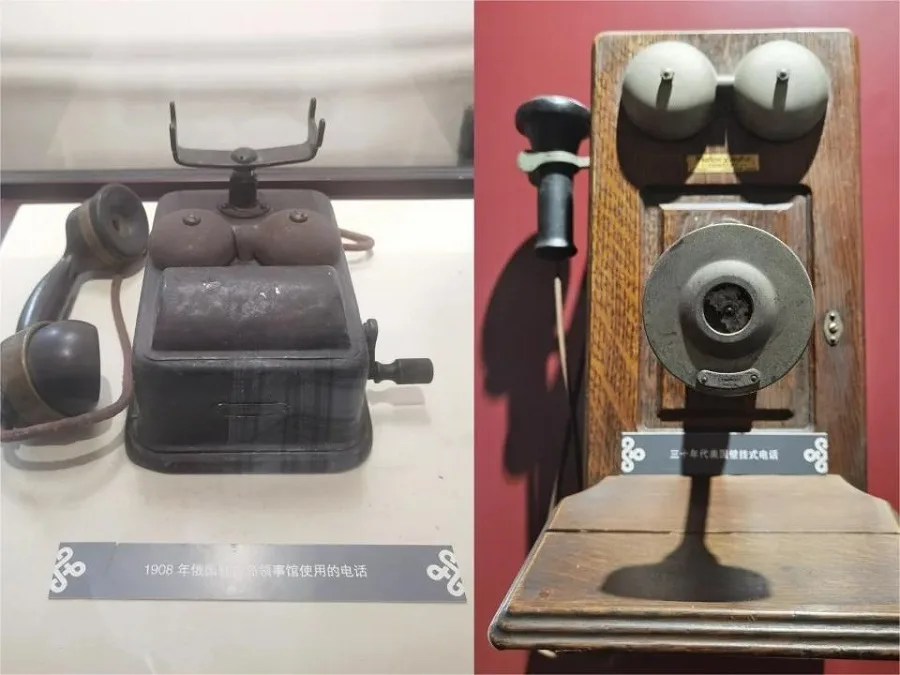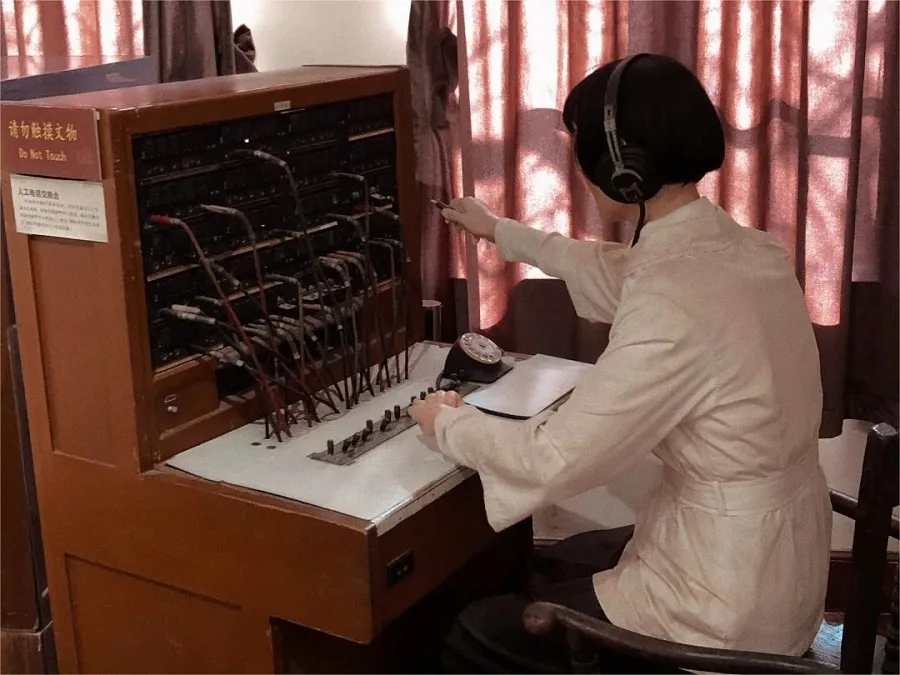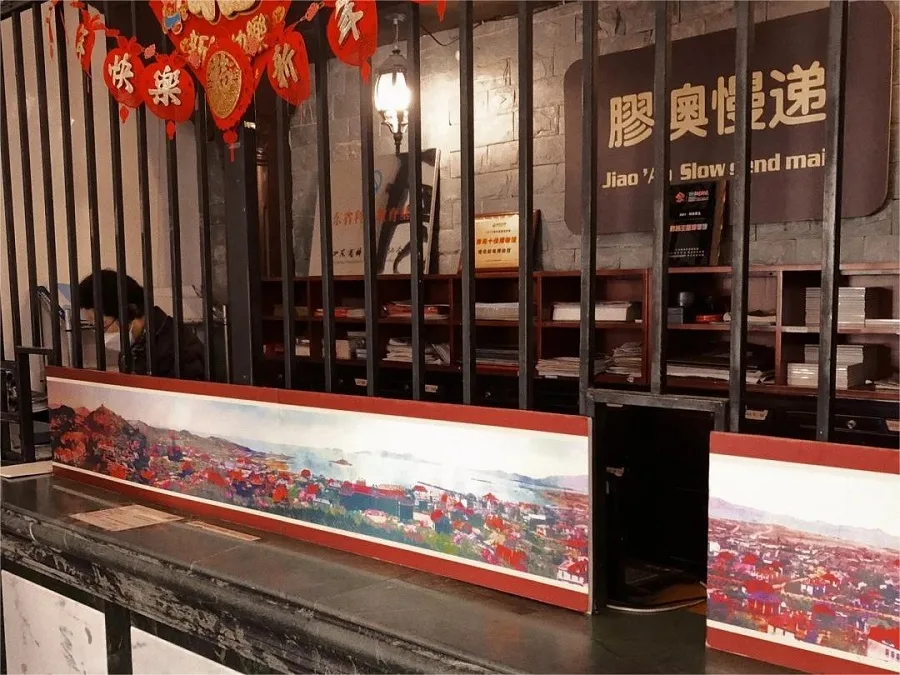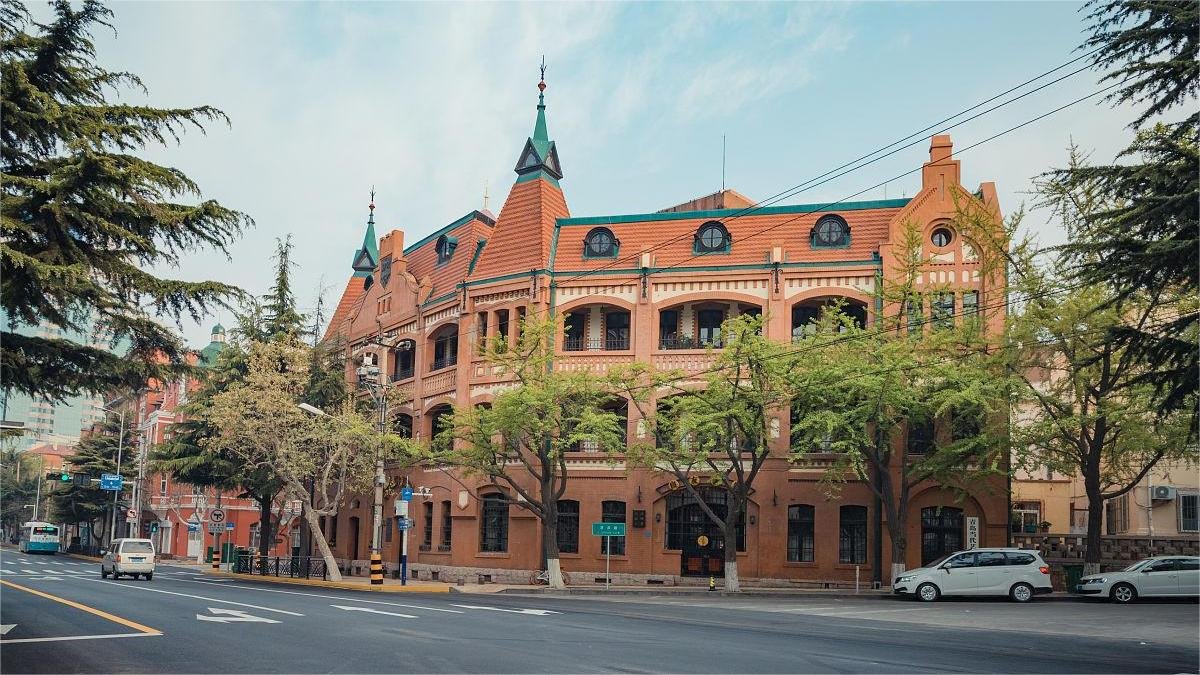The Qingdao Post and Telecommunications Museum (青岛邮电博物馆), originally built in 1901, is housed in the former German Imperial Post Office in Jiaozhou Bay. It is the oldest existing post and telecommunications building in Qingdao. The museum opened to the public in 2010 and features a collection of over 1,000 artifacts and more than 2,000 historical photographs. Covering an area of approximately 2,500 square meters, the museum has three open floors for visitors.
On the first floor, you will find the reception hall, an antique telephone wall, and a souvenir shop. The second floor hosts the main exhibition hall, showcasing the evolution of post and telecommunications in Qingdao over the past century. The highlight of the museum is the Tower 1901 Hall on the fourth floor, the only century-old wooden tower open to the public in Qingdao, which exhibits architectural techniques from 120 years ago.
Visitors can explore a variety of telephones and learn about the history of telecommunications in Qingdao. One notable exhibit is a recreation of Kong Xiangxi’s office from the 1920s, providing a glimpse into the period’s historical setting. Additionally, visitors have the unique opportunity to write a postcard to their future selves. The museum offers a letter storage service, allowing you to choose a delivery date one, five, ten years, or even further into the future.
Table of Contents
- Basic Information
- Location and Transportation
- Highlights of Qingdao Post and Telecommunications Museum
- Attractions near Post and Telecommunications Museum
Basic Information
| Estimated Length of Tour | 1 hour |
| Ticket Price | First Floor: Free Second and Fourth Floors: 20 RMB |
| Opening Hours | 9.30 – 18.00 (1st May – 31st October) 10.00 – 17.00 (1st November – 30th April) |
| Telephone Number | 0086-0532-82872386 |
Location and Transportation
The Qingdao Post and Telecommunications Museum is located at 5 Anhui Road, in the Shinan District of Qingdao, Shandong Province. It is situated at the intersection of Anhui Road and Guangxi Road. To get there, you can choose one of the following ways:
Bus: Take bus 6, 25, 26, 202, 217, 220, 307, or 316 and get off at Guangxi Road Zhejiang Road Stop (广西路浙江路站).
Metro: The closest metro station to Qingdao Post and Telecommunications Museum is the People’s Hall (人民会堂) on line 3 and line 4. After getting out of the station from Exit A, walk about 800 to the west to reach the museum.
Highlights of Qingdao Post and Telecommunications Museum

Wooden Wall-Mounted Telephone
One of the most prized artifacts in the museum is a wall-mounted wooden telephone produced by Ericsson in 1905. This antique device, with its wooden casing and church-like architectural design, is one of fewer than ten remaining in the world as of 2009. It stands as a testament to the early days of telephone technology and craftsmanship.
“Mother-in-Law” Telephone
An intriguing exhibit from France, known as the “Mother-in-Law” telephone, reflects early innovations in telephone conferencing. This early model can facilitate three-way conversations, making it an early version of a conference call system. The telephone features a separate handset and earpiece, allegedly designed to allow a mother-in-law to eavesdrop on her son-in-law’s conversations, ensuring he remained faithful. This humorous yet practical device highlights the social dynamics and technological ingenuity of the time.

The “Big Brother” Mobile Phone
Another eye-catching exhibit is an oversized mobile phone known colloquially as the “Big Brother.” Measuring 40 cm in height, 8 cm in width, and 8 cm in thickness, this early model is technically a “portable radiophone.” It gained fame from its appearance in the film “The Founding of a Republic,” where “Chiang Kai-shek” uses a similar device on an airplane. This bulky piece of technology was a precursor to modern mobile phones and was widely used for military communication during World War II.
Kong Xiangxi’s Office
On the second floor of the museum, visitors can find a meticulously recreated office of Kong Xiangxi, who served as the director of the Jiaozhou Commercial Port Telephone Bureau in the early 1920s. Invited by his classmate Wang Zhengting, the director of the Shandong Affairs Committee, Kong Xiangxi’s office includes original items such as an early 20th-century Japanese-style desk and a cipher codebook. This exhibit provides a historical context and personal touch to the evolution of telecommunications in Qingdao.

Antique Telephone Simulation
Visitors can also engage with history through interactive exhibits. The museum offers an opportunity to use antique telephones to simulate making calls as they were done in the early 20th century. Additionally, guests can try their hand at sending messages using a Morse code telegraph, experiencing firsthand the methods of communication from a bygone era.
Unique Services
The museum offers a unique letter storage service where visitors can write postcards to their future selves. These postcards can be scheduled for delivery one, five, or even ten years into the future, providing a personal and thoughtful connection to the passage of time.









